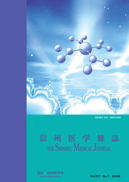64 巻, 4 号
選択された号の論文の11件中1~11を表示しています
- |<
- <
- 1
- >
- >|
巻頭言
-
2016 年 64 巻 4 号 p. 171-172
発行日: 2016/08/10
公開日: 2016/09/02
PDF形式でダウンロード (514K)
綜説
-
2016 年 64 巻 4 号 p. 173-181
発行日: 2016/08/10
公開日: 2016/09/02
PDF形式でダウンロード (2467K)
原著
-
2016 年 64 巻 4 号 p. 183-194
発行日: 2016/08/10
公開日: 2016/09/02
PDF形式でダウンロード (952K) -
2016 年 64 巻 4 号 p. 195-199
発行日: 2016/08/10
公開日: 2016/09/02
PDF形式でダウンロード (981K)
最新のトピックス
-
2016 年 64 巻 4 号 p. 201-203
発行日: 2016/08/10
公開日: 2016/09/02
PDF形式でダウンロード (506K)
特別寄稿
-
2016 年 64 巻 4 号 p. 204-207
発行日: 2016/08/10
公開日: 2016/09/02
PDF形式でダウンロード (660K)
私がなぜ現在の科目を選んだか
-
2016 年 64 巻 4 号 p. 208
発行日: 2016/08/10
公開日: 2016/09/02
PDF形式でダウンロード (373K)
自著とその周辺
-
2016 年 64 巻 4 号 p. 209
発行日: 2016/08/10
公開日: 2016/09/02
PDF形式でダウンロード (402K)
What’s new? -研究室探訪-
-
2016 年 64 巻 4 号 p. 210
発行日: 2016/08/10
公開日: 2016/09/02
PDF形式でダウンロード (717K) -
2016 年 64 巻 4 号 p. 211
発行日: 2016/08/10
公開日: 2016/09/02
PDF形式でダウンロード (717K)
抄録
-
2016 年 64 巻 4 号 p. 213-219
発行日: 2016/08/10
公開日: 2016/09/02
PDF形式でダウンロード (799K)
- |<
- <
- 1
- >
- >|
